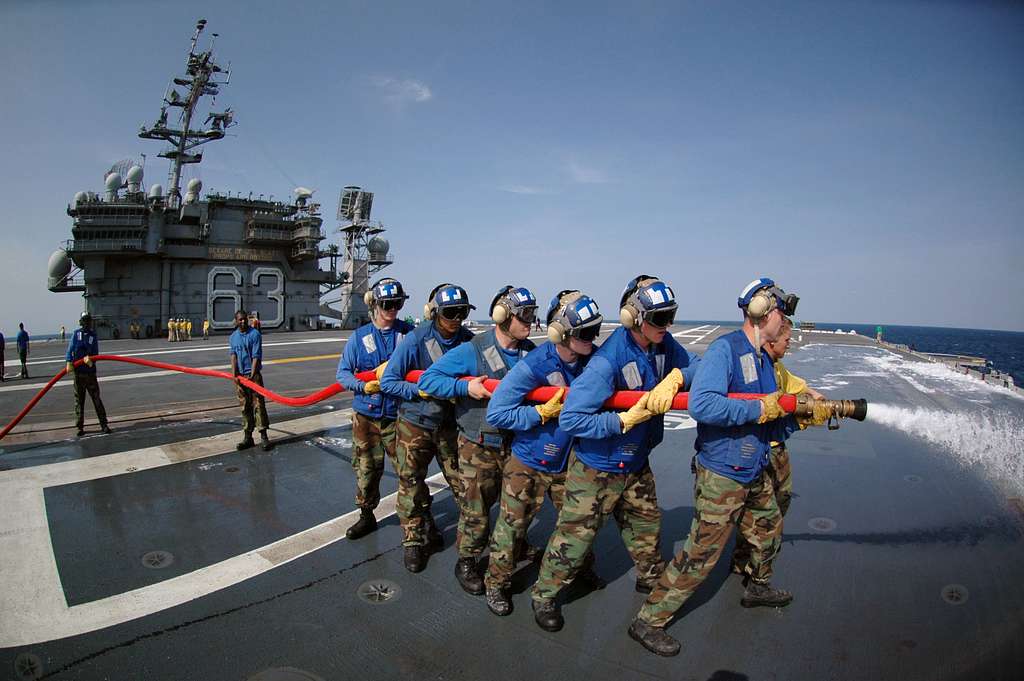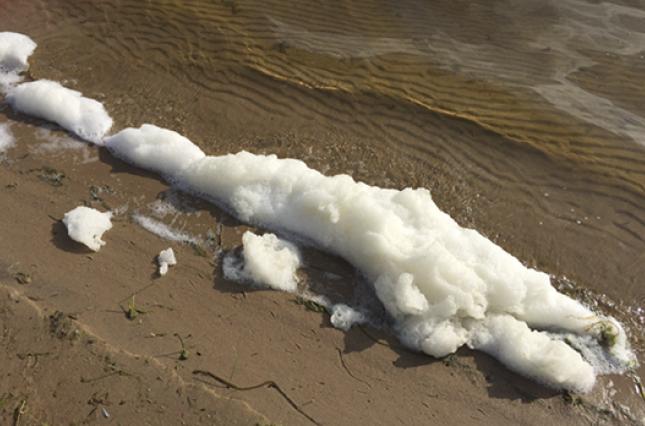
In September 2020, Clean Water Action and its allies won a major victory in our effort to stop the flow of PFAS chemicals into the environment. SB 1044 (Allen), a bill we co-sponsored, was signed into law. This bill phases out the use of PFAS-containing Aqueous Film Forming Foams (AFFF), which is one of the major of sources of PFAS pollution in California water.
AFFF are synthetic PFAS-containing foams designed for flammable liquid fires, also called Class B fires. The PFAS serve as surfactants that spread the foam to cool and suppress the fire. While they are extremely effective, they are also a major source of PFAS pollution in California and around the world. While this problem, as well as the development of safer alternatives have led many parts of the world to restrict or eliminate AFFF, the United States’ outdated fire regulations for military installations and airports has contaminated the water of nearby communities and threatened the health of firefighters who use these dangerous products.
Background
AFFF is one of two categories of synthetic foams used for Class B fires, the other being alcohol-resistant aqueous film-forming foams (AR-AFFF). Non-synthetic, protein-based foams are also effective for liquid fuel fires. Protein-based foams spread more slowly but have the advantage of being more heat resistant and more durable during a fire. In addition, they are biodegradable and thus are more environmentally benign.
Class A firefighting foams are used for wild fires and structural fires and do not contain PFAS chemicals. However, there are cases when AFFF is used because there may be a liquid fuel in the structure or wild fire region-such as gas stations, or oil cans.
Traditionally, AFFF contained perfluorooctanesulfonic acid (PFOS) or perluorooctanoic acid (PFOA). Because of their persistence in the environment they don’t break down and will remain in the environment virtually permanently) and well-documented health effects, these two specific chemicals are largely being phased out in the U.S. Still, these chemicals remain present in the bodies of most Americans and in our water, soil, and air, andnewer versions of this same family of chemicals are simply replacing them in AFFF formulations. Despite claims by manufacturers and the Department of Defense, these alternative PFAS are toxic, equally persistent in the environment, and can be more difficult and expensive to remove from water due to smaller molecular size.
According to one consulting firm presentation at an aviation conference in 2000, “the fluorinated surfactants in AFFF were among the most environmentally persistent substances ever — ‘impervious to biological and most chemical assault.’"
Firefighters are particularly at risk from PFAS exposure because they are exposed to AFFF during both training and actual fires. Additionally, some of their firefighting gear contain PFAS chemicals. A study of Los Angeles fire fighters done by Biomonitoring California demonstrated elevated levels of PFOS and other PFAS chemicals in their test subjects.
Outdated Federal Requirements
Under federal law, military applications and at Federal Aviation Administration (FAA) regulated airports require the use of firefighting foams that meet the U.S. Department of Defense (DOD) Military Specification (MILSPEC), MIL-PRF-24385. Unfortunately, rather than simply evaluating a given product based on its ability to suppress fire, the MILSPEC actually specifies that products must contain PFAS.
Thankfully, other countries have recognized the danger posed by continued use of AFFF and have moved toward fluorine free alternatives that provide effective firefighting properties and protections to firefighters themselves. Unlike the United States’ outdated model of specifying a type of foam, these alternatives have been assessed by the European oil industry and others as acceptable for use; in countries that use them, foams are evaluated on the basis of their performance.
The Need to Eradicate PFAS Foam: No Exceptions
The use of AFFF is not only a threat to the health and safety of California communities, but the anticipated socio-economic cost of cleanup of already contaminated regions is exorbitant. The evidence for both environmental and economic harm prompted one international public interest group, called the International POPs Elimination Network (IPEN) to conclude that given “the availability, effectiveness, and certifications of fluorine free firefighting foams,…no exemptions for continued production and use of PFOA and its precursors or PFOS in AFFF should be recommended and no exemption should permit continued use of existing AFFF stockpiles containing PFAS substances. We further caution that replacement of other per-and polyfluorinated substances in AFFF including short-chain PFAS, would be regrettable substitutions that perpetuate harm to the environment and human health. Precaution is embedded in the Stockholm Convention and protective action is a moral imperative for implementing treaty objectives.”
Limited Federal Action
To date, there has been some resistance at the federal level to stop using any kind of AFFF. However, the FAA Reauthorization Act of 2018 (HR 302) directs the FAA to change its requirement that airports use PFAS-containing foams. Clean Water Action has also helped build bipartisan support in Congress to direct the Department of Defense to use the to change the MILSPEC so that it no longer requires AFFF and military bases can switch to safer alternative foams. This revision is moving forward, but not surprisingly, at a slow pace.
States Moving Forward
While federal action is moving slowly to eradicate the use of AFFF at federally required sites, states are leading the way in limiting its use. Led by Washington State in 2018, other states are restricting use of AFFF for many non-federally mandated firefighting entities, banning its use in all training exercises, and even requiring disclosure of PFAS in firefighting gear.
These efforts have been the result of strong partnerships between the environmental and firefighting communities. Clean Water Action is proud to have worked with firefighters, health organizations, other environmentalists and state legislators to pass SB 1044 (Allen). This is the strongest such AFFF restriction in the country to date, in that it goes beyond banning the sale of the products by a certain date and actually stops their use. This closes a loophole that allowed cities or other entities to continue using stockpiled PFAS foams indefinitely. The bill also requires manufacturers who profited from these dangerous products to take responsibility for unused stockpiles, and inform firefighters when their gear contains PFAS so they can limit exposure. This is a major win for our firefighting heroes and our water supplies.
Watch our PFAS Film!
Resources:
IPEN: The Global PFAS Problem: Fluorine-Free Alternatives as Solutions
Interstate Technology Regulatory Council factsheet on AFFF and legacy PFAS foam
Sharon Lerner/the Intercept: The Military’s Toxic Firefighting Foam Disaster


